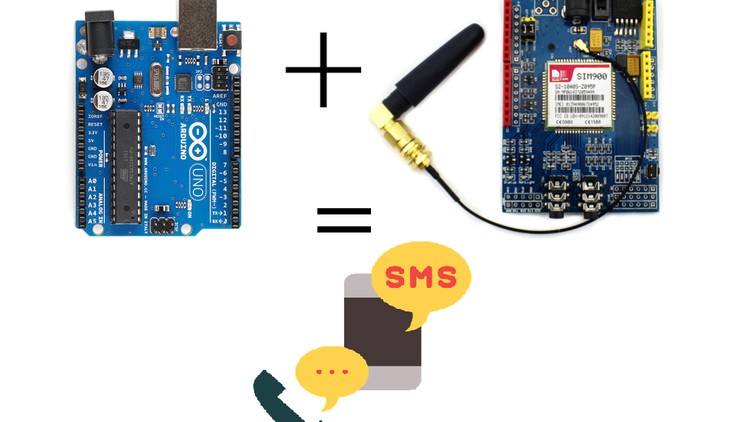
Description
Hi! welcome to this course. In this course, we will talk about “Arduino GSM Communication for Internet of Things” as mentioned.
Interfacing GSM module with Arduino- The GSM module is a great way to add cellular connectivity to your Arduino project. This module allows you to send and receive SMS messages, make and receive calls, and connect to the internet over a GPRS connection. Here are five benefits of using the GSM module with Arduino:
1. You can send and receive SMS messages with the GSM module. This is a great way to stay in touch with friends and family or to send alerts and notifications.
2. You can make and receive calls with the GSM module. This is a great way to stay connected even when you’re on the go.
3. You can connect to the internet over a GPRS connection. This allows you to access
Arduino GSM Communication is a course that teaches you how to use the Arduino platform to send and receive data over the cellular network. You will learn how to connect your Arduino board to a GSM modem, and how to send and receive data using the AT commands. This course is perfect for anyone who wants to build projects that require internet connectivity, such as remote data logging, or controlling devices over the internet.
Arduino is an open-source electronics platform based on easy-to-use hardware and software. It’s intended for anyone making interactive projects.
The Arduino GSM Communication for Internet of Things course will teach you how to use the Arduino IDE to develop applications that send and receive data over a cellular network. You’ll learn how to connect an Arduino board to a GSM module, how to send and receive SMS messages, and how to make calls using the Arduino platform.
In this course, we will discuss the following:
- Introduction
- About A6 GSM Module
- Connecting A6 GSM Module to Arduino UNO
- PROJECT ONE(SENDING AND RECEIVING MESSAGES USING GSM MODULE)
- Hardware Requirements
- Software Requirements
- Downloading and Installing Requirements
- Setup 1
- Setup 2
- Project 1
- Project 2
- Project 3
The Internet of Things (IoT) is the network of physical objects—devices, vehicles, buildings, and other items embedded with electronics, software, sensors, and connectivity—that enables these objects to collect and exchange data.
The Arduino GSM Communication for Internet of Things course is designed to help individuals communicate with devices that are part of the IoT. The course covers topics such as setting up a GSM module, sending and receiving text messages, making and receiving phone calls, and more.
We created this course because we wanted to help people take advantage of the IoT. With the Arduino platform and GSM module, people can build all sorts of applications that can make their lives easier or more efficient. We hope that this course will give people the skills they need to create awesome IoT projects.
If you’re interested in building Internet of Things projects that communicate with the outside world, then this Arduino GSM Communication for Internet of Things course is for you. You’ll learn how to use the Arduino GSK shield to connect your projects to the internet and send data back and forth. This is a great way to add connectivity to any project and open up a whole world of possibilities.
Sign up for the course now!
Who this course is for:
- this course is applicable to anyone who wants to learn Arduino GSM communication
- anyone who has knowledge in Arduino is Advantage
- Arduino enthusiasts and IoT developers who want to add GSM to their projects.
- Arduino GSM Communication for Internet of Things is for people who want to learn how to connect Arduino with a GSM chip and use it to send data to the internet.
- If you are a maker, engineer or entrepreneur who wants to turn your IoT ideas into reality, or if you want to add mobile connectivity to your existing projects, this course is for you.
Requirements
- Computer
- Arduino Board
- A6 GSM Module
- Arduino Uno
- BreadBoard
- Fritzing App
- Arduino IDE
Last Updated 10/2022
Download Links
Direct Download
Arduino GSM Communication for Internet of Things.zip (313.3 MB) | Mirror


